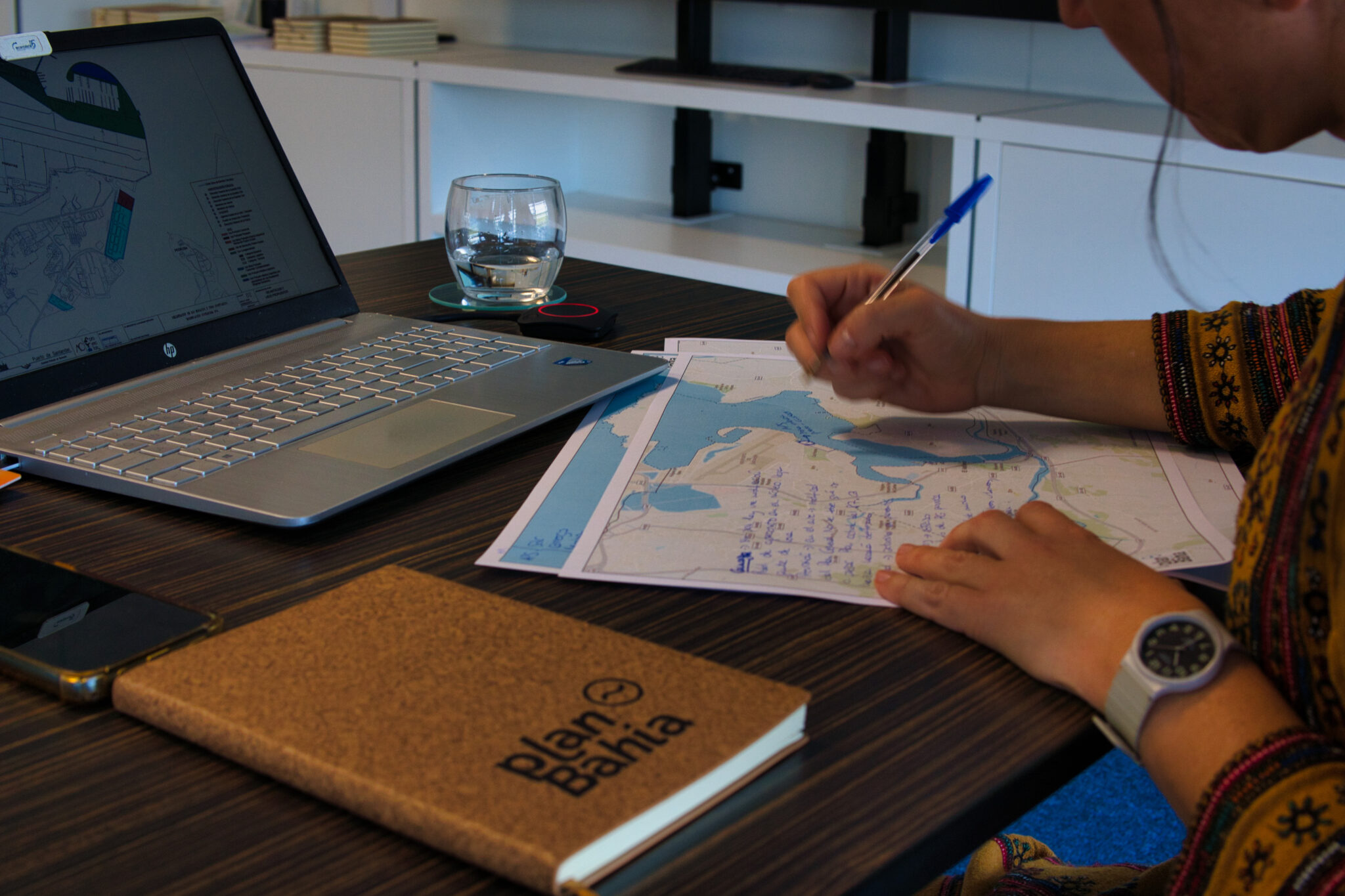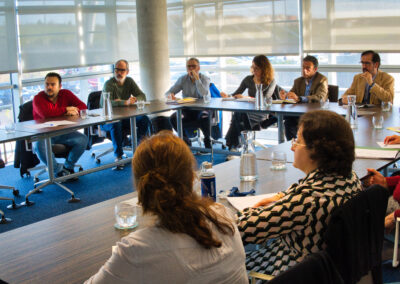Plan Bahía examines the challenges and needs to promote a more sustainable urbanism in the estuary environment.

Institutional representatives and experts point out the need to have common methodologies for urban planning, to establish collaboration agreements between administrations to develop coastal initiatives and to prepare guidelines to orient the actions of municipalities.
Urban planning in the area surrounding the Bay of Santander has been the subject of analysis within the framework of Plan Bahía. Representatives of the existing administrations in the estuary environment and experts in this field participated in a sectorial roundtable to address the challenges and needs to promote a more sustainable and resilient urbanism in the area.
Participants agreed that the administrative complexity of urban planning limits the capacity to develop and update urban plans. Thus, it was emphasized that the creation of non-binding plans, such as Plan Bahía, represents an opportunity to provide the necessary tools for the administrations to carry out their activities in a more effective and agile manner.
During the session, key issues were addressed, such as the need to have common methodologies for urban planning, adaptable to the different peculiarities of the municipalities surrounding the Bay. An example of this would be the implementation of specific methods to evaluate the carrying capacity of the territory.
The attendees discussed the uncertainty about the future of concessions in the maritime-terrestrial public domain after the annulment of Royal Decree 668/2022, which modified the General Coastal Regulation,
The importance of establishing binding agreements between administrations to develop coastal initiatives and of having regulatory instruments that make it easier for entities and organizations to take responsibility for promoting certain initiatives in the area of urban planning were other points discussed.
Guidelines and recommendations for sustainable urban planning
One of the great challenges in urban planning is the complexity of coordinating all the actors involved and establishing coordination procedures, which are necessary to address some initiatives.
During the round table, the need for administrations to have detailed information and specific guidelines to guide actions in a precise manner was discussed. This would facilitate the strategic and environmental assessment, as well as the interpretation of the actions by the municipalities. For example, when restoring a marsh area, it would be essential to have exhaustive data on the scope of the action, such as restoration methods, the impact on the Bay’s environment or the actors involved, among others.
Along the same lines, the attendees considered it important for local administrations to have recommendations to promote sustainable urban planning, such as measures to improve the permeability of the territory or the urbanization of public spaces, enabling their streamlined integration into municipal ordinances and licensing requirements.
They proposed that these guidelines and technical criteria be part of the collaboration agreements between administrations, ensuring their effective implementation and contribution to a more sustainable urban development.
Spaces and uses of the Bay
The institutional representatives raised the possibility of establishing a compensation system between the different institutions involved in the management and conservation of the Bay, based on the contribution of spaces and/or ecosystem services that improve the general conditions of the estuary.
With a view to developing territorial planning at the regional level, the participants highlighted the importance of having tools and methodologies for estimating the carrying capacity of beaches and parking lots in the coastal areaessential factors for to ensure proper management of resources and avoid the saturation of certain spaces.
Finally, the need to regulate water sports and navigation (with or without motor) was highlighted, given that they can generate dangerous situations for users of the sandbanks, as well as the possibility to implement combined measures of surveillance, fines, awareness raising and information to ensure responsible use and respectful of the bay of Santander.
Solutions for integrated management
The conclusions reached at the Urban Planning Working Group, together with those obtained in other sectoral sessions, will be a key element in the development of the sector. essential component for the development of the Integrated Diagnosis of the Bay of Santander. This assessment, which will also include in-depth technical analyses, will be the cornerstone for developing the proposal of solutions that address the challenges identified in the conservation and sustainable management of the estuary.
Plan Bahía’ is a research project coordinated by the Institute of Environmental Hydraulics of the University of Cantabria(IHCantabria) and funded by the Ministry of Science and Innovation and the Government of Cantabria, through the Marine Sciences Program. Its objective is to draw up the Integrated Management Plan for the Bay of Santander, which will establish the collaboration mechanisms and the measures to be implemented so that the institutions that make up the Bay Committee can address the future actions to be developed within the framework of an Integrated Plan for the Management of the Bay.
This study is part of the
ThinkInAzul
program, financed by the Ministry of Science and Innovation with funds from the European Union NextGenerationEU (PRTR-C17.I1) and by the Autonomous Community of Cantabria.







